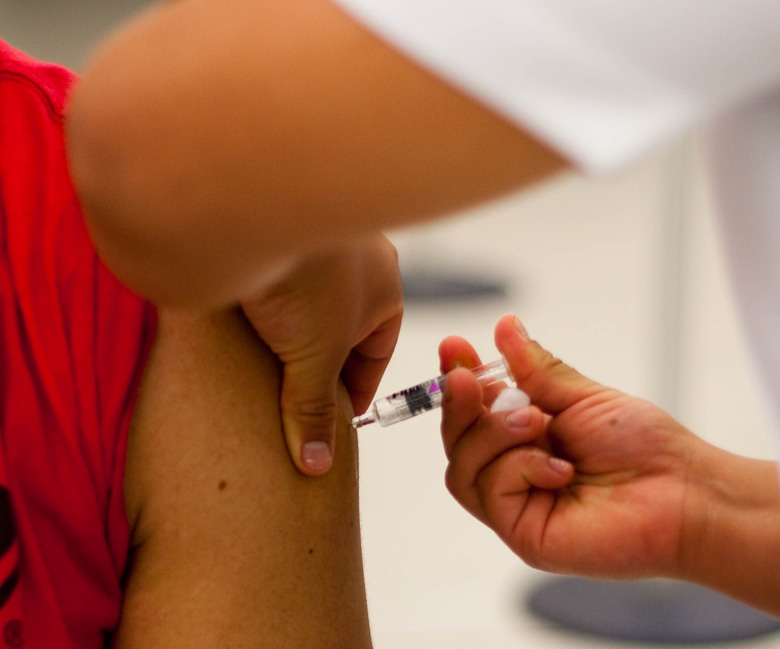By Professors Jeff Van Detta and Joanna Apolinsky, Atlanta’s John Marshall Law School

In one of the major product liability cases in recent years, the Supreme Court in
Bruesewitz v. Wyeth, 562 U.S. ____ (Feb. 22, 2011), ruled that federal law immunized vaccine-manufacturers from design-defect tort claims under state law.
In
Bruesewitz, the Justices decided the longstanding, unresolved question whether persons injured by vaccines could sue the pharmaceutical manufacturers for damages those persons claimed were caused by a
defectively designed vaccine, as opposed to one defectively manufactured or marketed with inadequate warnings. Normally, design-defect claims are the province of state tort law. However, the National Childhood Vaccine Injury Act of 1986 (NCVIA or Act) created a no-fault compensation program for injuries allegedly caused by vaccines. The NCVIA affords manufacturers significant protection from tort liability. In particular, the Act eliminates manufacturer liability for a vaccine’s unavoidable, adverse side effects.
The Court ruled that the NCVIA preempts all design-defect claims against vaccine manufacturers brought by plaintiffs seeking compensation for injury or death caused by a vaccine’s side effects. Although the NCVIA says nothing specific about the status of design-defect claims, the Court explained that two aspects of the NCVIA preclude court litigation over vaccine design defects. First, the Act provides for federal agency improvement of vaccine design and for federally prescribed compensation, which are other means for achieving the two beneficial effects of design-defect tort litigation cases–i.e., prompting the development of improved designs, and providing compensation for inflicted injuries. The Act also requires manufacturers to fund an informal, efficient compensation program for vaccine injuries in exchange for avoiding costly tort litigation and the risk of runaway jury verdicts, and the Court reasoned there is no indication that Congress would have allowed for design-defect tort claims that “end-run” the NCVIA’s compensation system.
In discussing the tensions between vaccine-supply stability and the inefficiency of traditional tort litigation in resolving vaccine-injury claims, Justice Scalia’s majority opinion cited our article published in 2010 by the JLPP,
Rethinking Liability for Vaccine Injuries, 19 Cornell J.L. & Pub. Pol’y 537 (2010).
See Bruesewitz, 562 U.S. __, ___ n. 9.
In our article, we discuss the thorny legal questions that have become more troublesome with continually changing, and potentially devastating, strains of pandemic flu and other viruses that threaten the public health and the very fabric of economic system and social order — questions such as: When should there be liability for vaccine-related injuries? What kind of liability should there be? How should liability be allocated for vaccine-related injuries? And might that inquiry be made more meaningful by considering the liability-compensation question within a holistic framework of strategic planning and policy for vaccination as a cornerstone of societal stability and progress, rather than as an isolated pocket of tort or administrative law? Our consideration of these questions permitted us to construct an approach available to Congress to make reasoned, well-informed choices in this area–and to aspire to more innovative approaches better adapted both to the unique context of vaccine injury and of the governmental compulsion behind many vaccines.
Because the Supreme Court has effectively found that the NCVIA preempts the field of compensating victims of vaccine injury, any future reforms in compensating those injured by vaccines will have to come from Congress.
Bruesewitz, therefore, leaves it to Congress to consider whether to amend the NCVIA to permit some species of design-defect claims. There certainly is reason for Congress to do so. As two recent commentators on the Bruesewitz decision have observed,
In her dissent, Justice Sotomayor argued that the text of the statute did contemplate design-defect claims because it provided liability protection only for “unavoidable” side effects. Accordingly, the adverse side effects could have been avoided if the vaccine in question had been designed differently. The dissent expressed concern that the majority’s decision creates a significant vacuum—the Food and Drug Administration’s approval process does not require vaccines to be optimally designed or continuously improved, and state tort liability for design defects has traditionally provided this incentive. The dissent further pointed to the lack of post-approval regulatory oversight and the lack of competition in the vaccine market as exacerbating the regulatory vacuum.
[
Erin C. Fuse Brown & Jalayne J. Arias, Bruesewitz v. Wyeth’s Impact on the Vaccine Safety Debate, ABA Health eSource, April 2011 Volume 7 Number 8.]
Advocacy Groups, such as the Coalition For Vaccine Safety, are calling for Congress to amend the NCVIA – and the questions for legislators, should they decide to respond to such calls, are manifold: how to craft an amendment (e.g., how to define design defects, which design defects should be actionable, should the unavoidable side effects provision be amended, should a new section be crafted to create a design-defect cause of action and should it arise under federal or state law, what burden of proof should be required, who should bear that burden, what defenses should be permitted, and to what extent should design-defect claims be limited to the Vaccine Court). Each of these questions confronts Congress with a delicate balance between clashing interests – such as protection of the vaccine supply and maintaining the economic viability of vaccine manufacture, versus the interests of injured individuals in corrective justice and of the public in incentivizing the pharmaceutical industry to improve vaccine design beyond the status quo. See, e.g.,
John D. Kraemer and Lawrence O. Gostin, Commentary—Medicine and Law: Vaccine Liability In The Supreme Court—Forging A Social Compact, JAMA, 2011;305(18):1900-1901 (May 11, 2011);
Christine Vara, How The Fall Of Vaccine Manufacturers Could Impact Public Health, Shot Of Prevention: News & Views On Vaccines, (Feb. 25, 2011).
We, too, concluded in our article that Congress should revisit the NCVIA as part of a broader rethinking of vaccine public policy. Among our proposals is a classification model that identifies appropriate constituencies and relevant legal principles and suggests approaches for balancing the interests of these constituencies with legal principles in specific kinds of cases. Our hope is that our work can contribute to meaningful Congressional action.


